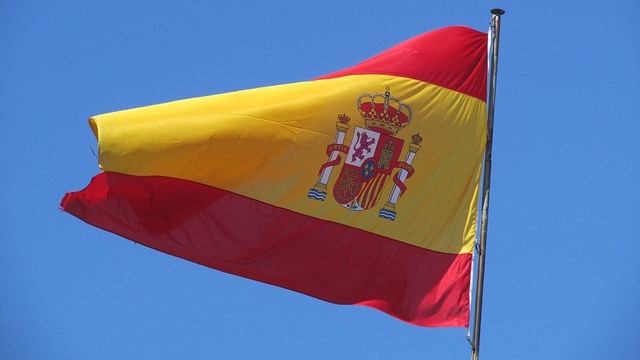The Brexit process represents a challenge to Britain in future years without the support of the European Community.
Movements in financial markets reveal the effect of Brexit negotiations on key indicators such as growth, prosperity and trade in Great Britain. Here we take a closer look at market movements in July and the wider implications for the British economy.
The Pound
The pound immediately slumped to a 30-year low against the US dollar after the Brexit vote over worries about the UK economy’s long-term prospects outside the EU. Over the past month sterling has edged up very slightly against the US currency, which is partly because some investors have brought forward expectations of when the Bank of England will raise interest rates from an all-time low of 0.25%, and partly because the dollar has weakened against a range of currencies. Compared with the night of the referendum in June last year, the pound is still down about 13% against the dollar and around 14% against the euro.
Equities
The FTSE 100 index of shares in big companies plunged the day after the referendum but quickly recovered and ended 2016 at a record high. That rise was driven in part by the pound’s weakness which helps the many companies in the index that report in dollars and those blue chip companies with a large proportion of foreign earnings. While the FTSE 100 has not surpassed the record high achieved in early June, the index is up over the last month and is now around 18% above its level on the night of the Brexit vote. The FTSE 250 index of midcaps is up about 14% from its level on 23 June 2016.
Inflation
Inflation has risen rapidly since the EU referendum as the sharp drop in the value of the pound pushes up the cost of goods imported from abroad. Last month, however, inflation fell unexpectedly and for the first time in nine months to 2.6%, down from a four-year high of 2.9% in May. The fall was mainly driven by lower fuel prices, reflecting weaker oil prices and providing some respite for cash-strapped consumers. But household budgets are still under pressure from falling real pay, as inflation outpaces wage growth of 1.8%.
UK Trade
Policymakers are hoping that stronger exports and business investment will help to offset a downturn in consumer spending. The latest official trade figures showed that exports did rise by 2.5% in May but imports rose by an even bigger 4.8%. That meant the deficit in trade in goods with the rest of the world widened more than expected, to £11.86bn in May from £10.6bn in April. When services such as banking and legal work were included, the deficit widened by £1bn to £3.1bn, reflecting an increase in imports.
British Business
UK firms had a tougher time in June than was expected, with business activity growing at its weakest pace for four months. Growth slowed in all three key areas of manufacturing, construction and services according to the Markit/CIPS purchasing managers’ indices (PMIs). Growth in services, Britain’s biggest sector, was particularly weak, as consumer-facing businesses including hotels and restaurants were hit by the squeeze on household incomes. The PMIs are tracked for early clues on official GDP figures, and the authors of the reports said that despite weakness in June, the second quarter overall was on track to beat 0.2% growth in the first quarter.
Public Sector Finances
A slowing economy, rising inflation and a decline in corporation tax receipts meant the UK borrowed more than expected in June, with the country’s budget deficit rising to £6.9bn – almost 50% higher than in the same month last year. Higher inflation, which followed sterling’s slump after the Brexit vote, pushed up the cost of financing the portion of government debt linked to rising prices. Lower GDP growth in the first quarter put pressure on tax receipts while a bigger than expected contribution to the EU budget added to the £2bn of extra borrowing. After the first three months of the financial year, borrowing was up almost 9% compared with the first quarter of last year.
Unemployment
Household budgets have come under pressure from a fall in real pay, as prices rise faster than wages. That trend continued, according to the latest data, which showed average earnings including bonuses rose 1.8% in the three months to May, year on year. That was in line with expectations, but a slowdown compared with 2.1% growth in the three months to April. Adjusting for inflation, pay fell by 0.7% over the period, the biggest drop since the summer of 2014. Real pay fell despite a surprise drop in the unemployment rate from 4.6% to 4.5%, which was the lowest since 1975.
Retail Sales
Retail sales rebounded in June as the warm weather encouraged consumers to splash out on summer clothing. Sales volumes rose by 0.6% over the month, beating the 0.4% increase forecast by economists. The rise followed a sharp 1.1% drop in May. A better-than-expected June pushed up retail sales by 1.5% in the second quarter overall, following a 1.4% first-quarter fall.
UK House Prices
The latest monthly snapshot of the housing market from the Royal Institution of Chartered Surveyors (RICS) showed house prices rose at the slowest rate in 11 months in June. A net balance of 7% of surveyors saw prices rise rather than fall in June, down from 17% in May. It was the weakest since July 2016, a month after the Brexit vote, as political uncertainty weighed on the property market. The picture differed regionally, with London being the weakest market, followed by the south-east.





